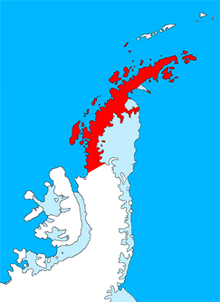

Following is a list of glaciers of the Palmer Archipelago and Graham Land in Antarctica. This list may not reflect recently named glaciers in the Palmer Archipelago and Graham Land.


Following is a list of glaciers of the Palmer Archipelago and Graham Land in Antarctica. This list may not reflect recently named glaciers in the Palmer Archipelago and Graham Land.